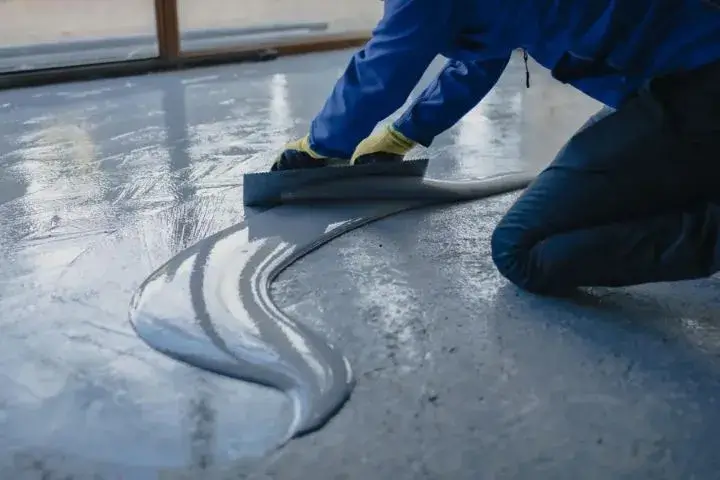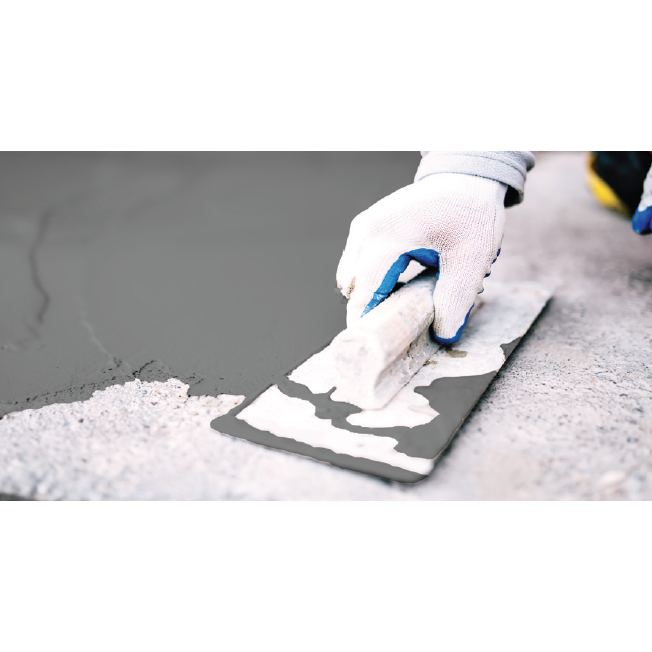Water Solutions That Last: Omaha’s Most Effective Systems
How Waterproofing Functions: A Thorough Take A Look At Strategies and Technologies
Waterproofing is vital for protecting frameworks from moisture-related damage. It entails numerous techniques and innovations that develop obstacles against water invasion. Traditional approaches, such as compressed clay, exist side-by-side with modern-day technologies like liquid-applied membrane layers. Recognizing the subtleties of these techniques is essential for efficient application. Nevertheless, the performance of any waterproofing solution pivots not just on the methods made use of however likewise on ongoing upkeep and evaluation. What are the vital aspects that influence lasting efficiency?
Understanding the Basics of Waterproofing
Waterproofing is an essential procedure that shields frameworks from water breach, which can result in substantial damages over time. This technique entails the application of numerous materials and methods made to create a barrier versus moisture. The key goal is to stop water from penetrating surface areas, which can create wear and tear, mold growth, and structural instability.Various aspects influence the option of waterproofing method, including the type of framework, its location, and environmental problems. Recognizing the physics of water motion and the buildings of different materials is essential in choosing a reliable waterproofing solution.Effective waterproofing not only safeguards structures however additionally enhances their long life and stability. Usually, it is incorporated right into the style phase of building and construction to guarantee extensive security. As understanding of water-related issues grows, the relevance of understanding waterproofing principles ends up being significantly clear to architects, builders, and property proprietors alike.
Typical Waterproofing Approaches
Traditional waterproofing approaches have been used for centuries, relying upon reliable techniques and materials to guard frameworks from water damage. Among the earliest techniques involves the usage of clay, which, when compacted, creates an all-natural obstacle versus moisture. Additionally, asphalt, a sticky, black product stemmed from oil, has actually been used for its water-resistant properties, commonly applied to roofing systems and foundations.Another strategy includes the application of lime-based plasters, which give a breathable layer that permits wetness to run away while avoiding water ingress. Thatch roof covering, a typical approach still seen in some societies, provides outstanding waterproofing as a result of its snugly packed straw layers.Moreover, using rock and block has actually projected, as these products are naturally resistant to water when properly set up. In general, traditional waterproofing techniques highlight the relevance of selecting appropriate products and construction techniques to boost durability against water intrusion.
Modern Waterproofing Technologies
Improvements in modern-day waterproofing innovations have actually revolutionized the way frameworks are secured from water damage. Cutting-edge techniques such as liquid-applied membrane layers and sophisticated sealers have actually boosted the efficiency and versatility of waterproofing options. These innovations permit seamless application, minimizing the danger of leaks and making certain extensive coverage over complicated surfaces.Moreover, the integration of clever technologies, such as wetness sensing units and automated surveillance systems, allows real-time assessment of waterproofing performance. This proactive technique promotes prompt maintenance and reduces long-term repair costs.Additionally, advancements in spray-applied coatings supply fast application and excellent bond, adapting to various substratums while providing durable defense. Techniques like polymer-modified systems additionally boost adaptability and durability, making them ideal for diverse settings. Generally, modern waterproofing modern technologies not just alleviate water breach yet likewise contribute to the long life and sustainability of frameworks, noting a substantial change in the market.
Products Made Use Of in Waterproofing
The efficiency of waterproofing services greatly depends on the products used in their application. Numerous materials are used to develop barriers against water ingress, each with distinct properties fit for various environments. Typically made use of materials consist of membranes, coverings, and sealants.Liquid-applied membrane layers, typically made from polyurethane or acrylic, create a seamless obstacle that adapts to intricate surfaces. Sheet membranes, generally built from rubber or polycarbonate, offer toughness and are ideal for bigger areas. Furthermore, cementitious waterproofing products, made up of cementitious compounds, provide superb bond and flexibility.Sealants made from silicone or polyurethane are crucial for joints and seams, ensuring thorough defense. Innovative materials, such as geo-composite membranes, incorporate multiple features, enhancing performance. On the whole, the selection of waterproofing materials is vital in achieving resilient and efficient water resistance, customized to particular task needs and environmental problems.
Common Applications of Waterproofing
Waterproofing plays an essential function in numerous industries, making certain the longevity and stability of structures. Typical applications include residential options that safeguard homes, industrial infrastructure that safeguards companies, and industrial settings that require robust protection versus wetness. Comprehending these applications highlights the significance of waterproofing click here to read in keeping both safety and security and capability throughout different environments.
Residential Waterproofing Solutions
Many homeowners encounter difficulties with moisture intrusion, making reliable household waterproofing remedies vital. Different methods exist to resolve this concern, consisting of exterior and interior waterproofing systems. Interior services typically involve the application of sealants and finishes to basement walls, which help avoid water infiltration. Exterior methods generally include the setup of drainage systems and water-proof membrane layers that draw away water away from the foundation.Additionally, property owners may consider sump pumps to eliminate water build-up and dehumidifiers to manage moisture levels. Correct grading and making use of rain gutters likewise play an important role in handling water circulation around the home. By implementing these methods, homeowners can considerably reduce the risk of water damage and mold development, making sure a dry and secure living atmosphere.

Industrial Framework Security
Reliable waterproofing remedies play a critical function in the security of commercial facilities. Sump pump installation & replacement Omaha. These techniques are important for guarding buildings, vehicle parking frameworks, and bridges from water damages, which can endanger architectural honesty and lead to pricey repair services. Common applications include the setup of membrane layers, finishes, and sealants that create obstacles versus wetness seepage. Areas such as basements, roofing systems, and outside wall surfaces are commonly focused on to guarantee long life and durability. Additionally, waterproofing systems can enhance energy efficiency by protecting against water-related issues that may bring about mold and mildew development and degeneration. By carrying out durable waterproofing steps, residential or commercial property proprietors can shield their financial investments and maintain functional performance, inevitably contributing to the total sustainability of industrial centers
Industrial Applications Overview
While various sectors encounter distinct difficulties, the requirement for dependable waterproofing options remains a continuous in industrial applications. Industries such as manufacturing, construction, and power commonly experience environments where moisture direct exposure can threaten structural integrity and operational efficiency. In making centers, waterproofing is vital for securing equipment and products from water damages. In building, it safeguards structures and basements against groundwater seepage. The energy sector depends on waterproofing for the protection of tools in hydroelectric plants and offshore frameworks. In addition, food handling sectors utilize waterproofing to guarantee hygiene and conformity with safety and security criteria. In general, efficient waterproofing remedies are vital for improving durability, safety, and efficiency throughout various commercial settings.
Upkeep and Longevity of Waterproofing Solutions
Waterproofing options are designed to use long-term defense versus wetness invasion, normal upkeep is essential to assure their performance and long life. Routine evaluations play a substantial duty in recognizing prospective problems such as splits, peeling off, or indicators of water damage. Attending to these issues without delay can protect against additional degeneration and expensive repairs.Additionally, cleansing the surface of waterproofed locations assists get rid of dirt and debris that can jeopardize the integrity of the waterproofing obstacle. It's additionally a good idea to reapply protective coatings or waterproofing inc sealants as recommended by producers to maintain suitable efficiency. Environmental aspects, such as UV direct exposure and extreme weather conditions, can influence the life expectancy of waterproofing products, making normal analysis vital
Often Asked Questions
Can Waterproofing Be Applied in Cold Weather Condition?
The concern of applying waterproofing in winter elevates issues regarding adhesion and treating. Several products might not do at their ideal in low temperature levels, requiring cautious selection and factor to consider of specific guidelines for efficient application.
Just How Lengthy Does Waterproofing Normally Last?
The duration of waterproofing efficiency varies based upon materials and environmental variables. Usually, it can last from 5 to 10 years, but normal upkeep and inspections are important to guarantee peak efficiency and longevity.
Is Do It Yourself Waterproofing Effective and Safe?
The performance and safety and security of DIY waterproofing rely on numerous aspects, consisting of material high quality and application strategy. While some individuals accomplish adequate results, others might encounter problems that endanger long-term security and architectural stability.
What Are the Indicators of Failing Waterproofing?
Signs of stopping working waterproofing consist of visible water stains, peeling paint, mold and mildew growth, moldy odors, and dampness in wall surfaces or ceilings - Sump pump discharge drainage Omaha. These indications recommend endangered barriers, necessitating punctual olympic waterguard evaluation and prospective remediation to stop more damages
Just how Do I Pick the Right Waterproofing Service Provider?
